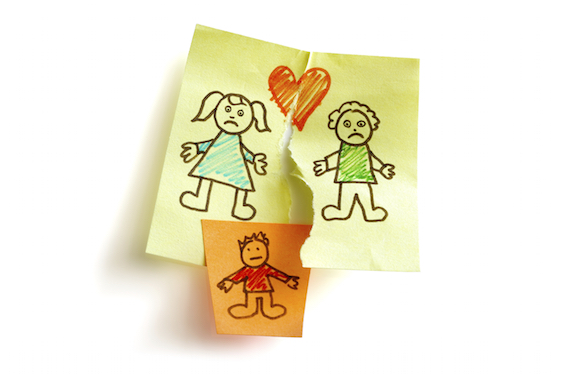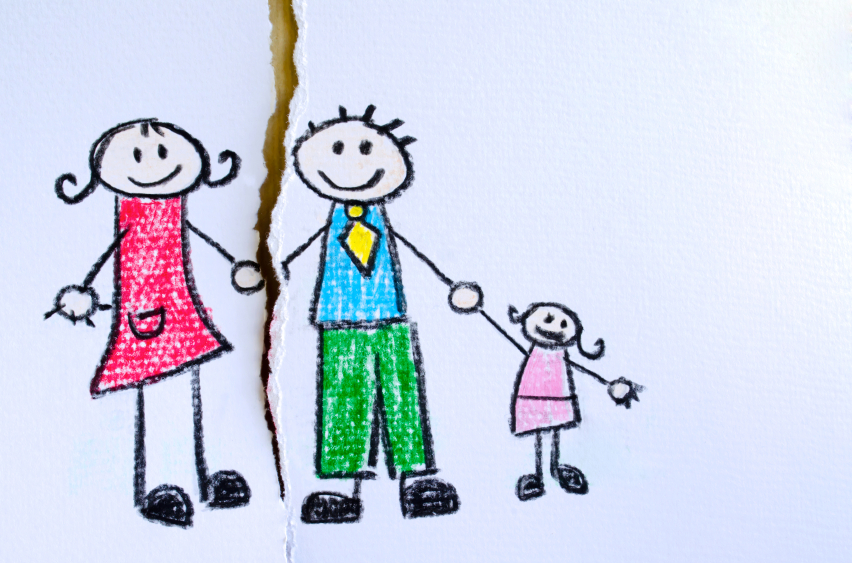Web-only Feature
Web-only Feature

Psychotherapy and Parents
Moving from Theoretical Assertions to Empirical Examination
Internet Editors Note: The authors recently published, “An Examination of Parent Sessions in Regulation Focused Psychotherapy for Children” which can be found in Division 29’s Psychotherapy.
If you’re a member of the Society for the Advancement of Psychotherapy you can access the Psychotherapy article via your APA member page.
Not a member? Purchase the Psychotherapy article here.
Collateral work with parents is a widely adopted practice among child psychotherapists. In the early days of child analysis, parents were not necessarily involved in the child’s treatment, it is now widely believed that work with parents can enhance the effectiveness of child psychotherapy treatment, enabling the changes that take place within the therapy room to more easily translate to other settings, such as home and school (Kernberg et al., 2012; Novick & Novick, 2005). Parent work has therefore become an essential component in many child psychotherapy treatments (Forgatch & Patterson, 2010; Midgley et al., 2017).
Working with parents whose children come to psychotherapists for therapy can be both rewarding and challenging. Parents are understandably worried, defensive, and overwhelmed, often bringing their own childhood experiences to their interactions with their child’s therapist. For these reasons, the literature on parent work universally emphasizes rapport-building and a supportive presence on the part of the therapist (Kernberg et al., 2012; Siqueland & Diamond, 1998). This establishes a collaborative and open relationship between therapists and parents. Beyond these foundational principles, however, cognitive-behavioral, psychodynamic, and mentalization-based therapists often advocate for theoretically distinct approaches to work with parents.
Different Theories, Different Approaches
Consider a child who presents for therapy due to defiant behavior at home. The child refuses to go to bed, get dressed, do their homework when asked, and shouts over the parent to “shut up” whenever the parent tries to address this behavior with the child.
Psychodynamic approaches work with parents, often focusing on both the parent and child’s early experiences. Collateral work with this parent in a psychodynamic treatment might explore what the parent was taught about disobedience and compliance as a child and how this affects their understanding of the child’s behavior. The clinician may also assist the parent in navigating the developmental conflicts the child is experiencing surrounding autonomy, identity, or competence that may be contributing to the behavior (Novick & Novick, 2013), and the feelings that arise for both parent and child as a result.
Within a psychodynamic framework, mentalization-based approaches tend to focus more specifically on parental reflective functioning and understanding the child’s inner world (Midgley et al., 2017; Slade, 2008). A mentalization-based therapist might help the parent identify and manage the feelings that are evoked by the child’s behavior. They may also invite the parent to become curious about what the child is thinking and feeling when they refuse to do what they’re told or shout at the parent. The goal of these strategies is to help the parent manage their own feelings and develop greater insight into how to approach and support the child.
A cognitive-behavioral therapist who uses Cognitive Behavioral Therapy (CBT) may focus on understanding the parent’s beliefs about the child and their parenting. Perhaps this parent feels nervous or uneasy about confronting the child or setting limits, reinforcing the child’s tendency to avoid the parent’s requests. The parent may also feel like they are a “bad parent”, and that the child is a “bad kid” because they are exhibiting this behavior. In a CBT treatment, the therapist may work to modify the parent’s distorted beliefs in order to facilitate a change in their approach to the child. CBT therapists may also focus on teaching the parent skills, such as ignoring negative behavior and giving praise and positive reinforcement for compliant behavior (Forgatch & Patterson, 2010; Siqueland & Diamond, 1998).
What are We Really Doing with Parents?
These distinct approaches have been written about extensively in the literature on child psychotherapy. However, very little research has been done to empirically examine the therapeutic process in work with parents. This is important for several reasons. First, describing and empirically defining therapy process provides a foundation for determining which specific processes within parent work contribute most to child treatment outcomes. In the case of the child above, it would be useful for the therapist to know which aspects of the process with parents have been shown to contribute to a decrease in child externalizing behaviors.
Many major findings in psychotherapy process research in both individual child and adult psychotherapy may be applicable to parent work, as well. As with individual child and adult therapy, it may be that there are “common factors”, such as alliance-building, which are broadly effective across many forms of treatment (Price & Jones, 1998). It may also be the case that the therapist’s overall approach may lead to differential effects for specific interventions (Ulvenes et al., 2012). For example, taking a more directive stance with parents within a CBT framework may be more effective than doing so within a psychodynamic framework. In addition, as with individual child and adult therapy, there may be interaction structures at play between each therapist-parent dyad that also contribute to outcome, and that vary based on parent characteristics (Halfon et al., 2020). For example, a mentalization-based model of parent work may be more effective with highly reflective parents, whereas a supportive, psychoeducational model may be best for parents with low reflective functioning.
However, most therapeutic modalities advocate that the child clinician is not meant to be a therapist for the parent as well, but rather a consultant, collaborator, supportive ally, or coach. Furthermore, the goal of the parent sessions is to enhance child outcomes, such that the child’s experience and behavior is the focus of work with parents. Therefore, the unique role and goals of the therapist when working with their client’s parents warrants independent examination of process in parent sessions.
In addition to better understanding the relationship between process and outcome in parent work, empirically examining parent sessions also provides us with the opportunity to evaluate the theoretical claims of manualized treatments, which emphasize adherence to specific guidelines in the treatment to achieve specific outcomes. We know from research on individual psychotherapy process with both children and adults that while different treatment modalities can be reliably distinguished from one another, therapists’ interventions do not always reflect their stated theoretical stance (Ablon & Jones, 1998; Jones & Pulos, 1993). Instead, therapists of one orientation (e.g., psychodynamic) often utilize interventions that are typical of another orientation (e.g., cognitive-behavioral) in their work. If this is also true of therapists when working with parents, then it is important to update treatment frameworks accordingly based on what clinicians are doing in the field and what is most effective to enhance child outcomes.
A Closer Look at Parent Work in One Child Treatment
Regulation Focused Psychotherapy for Children (RFP-C; Hoffman et al., 2016) is a short-term, manualized, psychodynamic treatment for children ages 5 to 12 with externalizing behaviors. Parent work is an important part of this treatment and integrated into the protocol – four of the 20 sessions are specifically designed for therapists to work with the child’s parents to share information, build rapport, and develop a better understanding of the child’s behavior. RFP-C conceptualizes disruptive behavior as a maladaptive means of emotion regulation – a way to defend against and avoid painful feelings. Thus, the main goal of RFP-C parent sessions, according to the RFP-C manual, is to help parents understand that their child’s disruptive behavior has meaning (Hoffman et al., 2016). The therapist is instructed to hold a reflective stance toward the parent, helping the parent to become curious about what the child is feeling when they engage in disruptive behavior at home or school, and how the behavior might serve as a response to those feelings. For example, in the case of the parent in the example above, the RFP-C therapist might work with the parent to identify the feelings of shame or inadequacy that are being avoided when the child angrily shouts at the parent to “shut up” when they try to address the child’s misbehavior. The therapist may also give examples from the treatment, with the child’s permission, to illustrate the way the child avoids painful feelings through disruptive behavior.
In a recent study (Kufferath-Lin et al., 2021), we examined psychotherapy process in 49 RFP-C parent sessions that were conducted as part of a randomized controlled trial of RFP-C. Utilizing the Psychotherapy Process Q Set (PQS; Jones, 2000), we identified the most and least characteristic aspects of the process in RFP-C parent sessions (Figures 1 and 2). We found that many of the most characteristic aspects of process with parents had to do with building therapeutic alliance. Therapists were identified as supportive, empathic, and nonjudgmental, such characteristics that were also emphasized in the RFP-C manual. We also noted distinctive qualities of RFP-C as an intervention. One of the most characteristic aspects of the process in these sessions was that the therapist suggested the meaning of others’ (i.e., the child’s) behavior. Interestingly, therapists avoided drawing attention to the parent’s use of defenses. While a focus on defense interpretation is central to the child sessions, RFP-C therapists took on a more supportive and unchallenging stance in parent sessions, in line with the focus on the child.
While each of these findings was relatively aligned with the therapeutic stance outlined in the RFP-C manual, there were also some surprising findings. When we examined how RFP-C parent session process compared to “ideal” process in different therapeutic modalities, such as CBT and psychoanalytic therapy (Ablon & Jones, 1998), reflective functioning (Goodman, 2013), and supportive-expressive (short-term psychodynamic) psychotherapy (Leichsenring et al., 2016), we found that process in RFP-C parent sessions was most similar to CBT process (Figure 3), despite sharing similarities with all four modalities examined (Figure 4). In contrast, a study of ideal process in RFP-C child sessions using the Child Psychotherapy Q Set (CPQ; Schneider & Jones, 2004) found no overlap with CBT process (Prout et al., 2018).
These findings suggest that regardless of the stance the therapist takes with the child, the stance and interventions used with children may look quite different from the stance and interventions the clinician employs with their parents. Regardless of the treatment focus with the child, it may be that psychotherapeutic process with parents consistently reflects “CBT-like” process. This is because a major focus across therapeutic modalities is psychoeducation and helping the parent understand the approach being taken with the child, although this may manifest differently in different treatments. For example, psychoeducation in a psychodynamic treatment may focus on introducing the concept of defenses, whereas psychoeducation in a CBT treatment may focus on teaching concepts such as positive reinforcement. Previous studies of brief psychodynamic treatments using the Psychotherapy Process Q Set have found a similar level of adherence to CBT process as that found in our study, perhaps because the short-term nature of the treatment requires a more active, structured approach, and a greater focus on building an alliance (Ablon & Jones, 1998; Ablon et al., 2006). Nevertheless, this finding supports previous research in adult psychotherapy that therapists often “borrow” from other modalities and veer from “ideal” process in their actual work with clients (For a more detailed description of the methodology and findings used in this study, see Kufferath-Lin et al., 2021).
Summary
Our findings raise several questions for future research on psychotherapy process with parents. As in individual child and adult therapy, the finding that parent sessions in RFP-C (a psychodynamic treatment) aligned most with CBT process suggests that parent work in other child psychotherapies may also reveal differences between what is theoretically considered “ideal” and what actually takes place in the room between therapists and parents. If this is the case, what are the most effective interventions for clinicians to use with parents in practice? What interventions with parents contribute most to child outcomes, and how can clinicians, especially those operating from a manualized or theoretically distinct framework, incorporate these interventions into their practice accordingly? How does process with parents differ between treatments in which parents attend monthly collateral sessions and treatments in which parents play a more active role, such as in parent-child interaction therapy (Brinkmeyer & Eyberg, 2003) or mentalization-based family therapy (Asen & Fonagy, 2011)? How can we tailor our interventions based on parent characteristics? Empirically examining psychotherapy process with parents allows us to answer these questions, bridging a divide between research and practice and facilitating a host of positive outcomes for families, such as increased engagement, improvement in child symptoms, and decreased parenting stress.
Cite This Article
Kufferath-Lin, T., Aafjes-van Doorn, K., Prout, T. A., & Hoffman, L. (2021, October). Psychotherapy process with parents: Moving from theoretical assertions to empirical examination. [Web article]. Retrieved from http://www.societyforpsychotherapy.org/psychotherapy-process-with-parents
References
Ablon, J., & Jones, E. (1998). How expert clinicians’ prototypes of an ideal treatment correlate with outcome in psychodynamic and cognitive- behavioral therapy. Psychotherapy Research, 8(1), 71–83. https://doi .org/10.1093/ptr/8.1.71
Ablon, J. S., Levy, R. A., & Katzenstein, T. (2006). Beyond brand names of psychotherapy: Identifying empirically supported change processes. Psychotherapy, 43(2), 216 –231. https://doi.org/10.1037/0033-3204.43.2 .216
Asen, E., & Fonagy, P. (2011). MBT-F: Mentalization-based family ther- apy. In A. W. Bateman & P. Fonagy (Eds.), Handbook of mentalizing in mental health practice (pp. 107–128). American Psychiatric Publishing.
Brinkmeyer, M. Y., & Eyberg, S. M. (2003). Parent-child interaction therapy for oppositional children. In A. E. Kazdin & J. R. Weisz (Eds.), Evidence-based psychotherapies for children and adolescents (pp. 204 – 223). Guilford Press.
Forgatch, M. S., & Patterson, G. R. (2010). Parent management training— Oregon model: An intervention for antisocial behavior in children and adolescents. In J. R. Weisz & A. E. Kazdin (Eds.), Evidence-based psychotherapies for children and adolescents (pp. 159–177). Guilford Press.
Goodman, G. (2013). Is mentalization a common process factor in transference-focused psychotherapy and dialectical behavior therapy sessions? Journal of Psychotherapy Integration, 23(2), 179 –192. https:// doi.org/10.1037/a0032354
Halfon, S., Goodman, G., & Bulut, P. (2020). Interaction structures as predictors of outcome in a naturalistic study of psychodynamic child psychotherapy. Psychotherapy Research, 30(2), 251–266. https://doi .org/10.1080/10503307.2018.1519267
Hoffman, L., Rice, T. R., & Prout, T. A. (2016). Manual of regulation-focused psychotherapy for children (RFP-C) with externalizing behav- iors: A psychodynamic approach. Routledge.
Jones, E. E. (2000). Therapeutic action: A guide to psychoanalytic therapy. Jason Aronson.
Jones, E. E., & Pulos, S. M. (1993). Comparing the process in psychodynamic and cognitive-behavioral therapies. Journal of Consulting and Clinical Psychology, 61(2), 306–316. https://doi.org/10.1037/0022-006X.61.2.306
Kernberg, P. F., Ritvo, R., Keable, H., & the The American Academy of Child and Adolecsent Psychiatry Committee on Quality Issues. (2012). Practice parameter for psychodynamic psychotherapy with children. Journal of the American Academy of Child and Adolescent Psychiatry, 51(5), 541–557. https://doi.org/10.1016/j.jaac.2012.02.015
Kufferath-Lin, T., Aafjes-van Doorn, K., Prout, T. A., & Hoffman, L. (2021). An examination of parent sessions in regulation-focused psychotherapy for children. Psychotherapy, 58(1), 109-120. https://doi.org/10.1037/pst0000314
Leichsenring, F., Ablon, S., Barber, J. P., Beutel, M., Connolly Gibbons, M. B., Crits-Cristoph, P., Klein, S., Leweke, F., Steinert, C., Wiltink, J., & Salzer, S. (2016). Developing a prototype for short-term psychodynamic (supportive-expressive) therapy: An empirical study with the psychotherapy process Q-set. Psychotherapy Research, 26(4), 500 –510. https://doi.org/10.1080/10503307.2015.1051160
Midgley, N., Ensink, K., Lindqvist, K., Malberg, N., & Muller, N. (Eds.). (2017). Working with parents from a mentalization-based framework. Mentalization-based treatment for children: A time-limited approach (pp. 163–183). American Psychological Association. https://doi.org/10 .1037/0000028-008
Novick K.K and Novick J. (2005). Working With Parents Makes Therapy Work. Jason Aronson.
Novick, K. K., & Novick, J. (2013). A new model of techniques for concurrent psychodynamic work with parents of child and adolescent psychotherapy patients. Child and Adolescent Psychiatric Clinics of North America, 22(2), 331–349. https://doi.org/10.1016/j.chc.2012.12.005
Price, P. B., & Jones, E. E. (1998). Examining the alliance using the Psychotherapy Process Q-Set. Psychotherapy, 35(3), 392–404. https:// doi.org/10.1037/h0087654
Prout, T. A., Goodman, G., Hoffman, L., Rice, T., & Sherman, A. (2018). Expert clinicians’ prototype of an ideal treatment in regulation focused psychotherapy for children (RFP-C). Journal of Psychotherapy Integration, 28(4), 401–412. https://doi.org/10.1037/int0000102
Schneider, C., & Jones, E. E. (2004). Child psychotherapy Q-Set coding manual. Unpublished manuscript, Clinical Psychology Program and School-Clinical Child Psychology Program, Ferkauf Graduate School of Psychology, Yeshiva University.
Siqueland, L., & Diamond, G. S. (1998). Engaging parents in cognitive behavioral treatment for children with anxiety disorders. Cognitive and Behavioral Practice, 5(1), 81–102. https://doi.org/10.1016/S1077-7229(98)80022-9
Slade, A. (2008). Working with parents in child psychotherapy: Engaging the reflective function. In F. Busch (Ed.), Mentalization: Theoretical considerations, research findings, and clinical implications (pp. 207– 235). Taylor & Francis.
Ulvenes, P. G., Berggraf, L., Hoffart, A., Stiles, T. C., Svartberg, M., McCullough, L., & Wampold, B. E. (2012). Different processes for different therapies: Therapist actions, therapeutic bond, and outcome. Psychotherapy, 49(3), 291–302. https://doi.org/10.1037/a0027895







Hello,
Can I speak with one of you more about this topic? And/or can you refer me to other research regarding the relationship between parents receiving psychotherapy and the effect this has on they children? Thank you very much.